Sutton Hoo is the famous ship burial of an East Anglian king from the 600s. The story of Sutton Hoo has appeared in a documentary called "The Dig" earlier this year, and I believe that this has brought more people to the National Trust-owned site in order to explore the story.
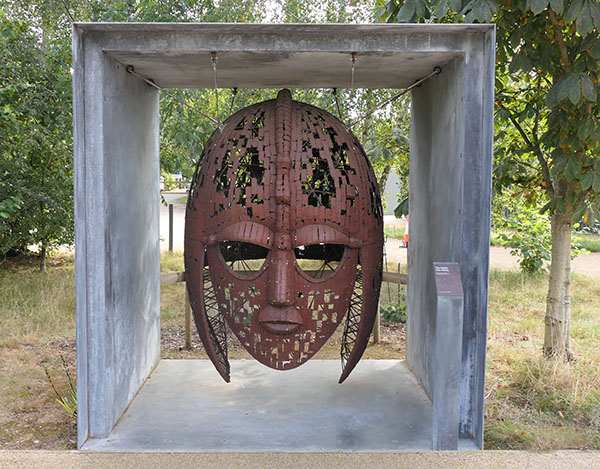
The site contains a visitor centre, replica ship sculpture, and two exhibition areas. Visitors can also explore the burial area or have a walk in the grounds near the river.
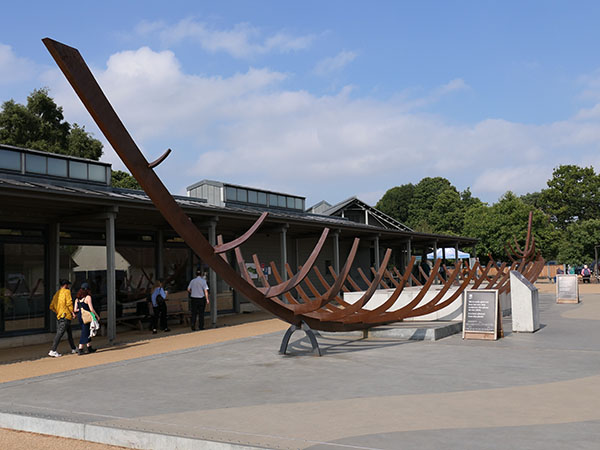
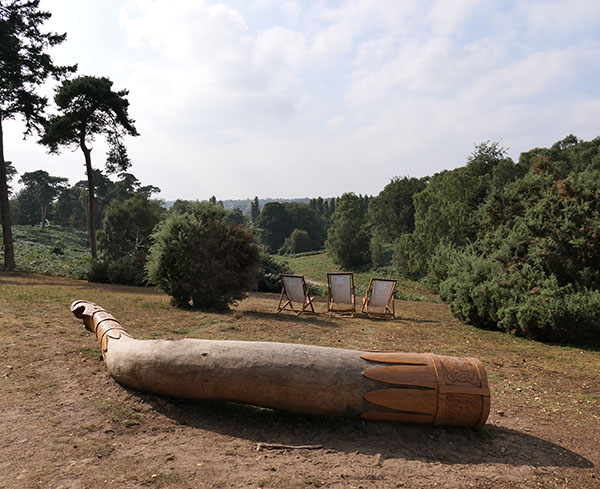
When I arrived, I headed toward the burial mounds first. These are located a short walk away, beyond the home that the owner lived in during the excavations.
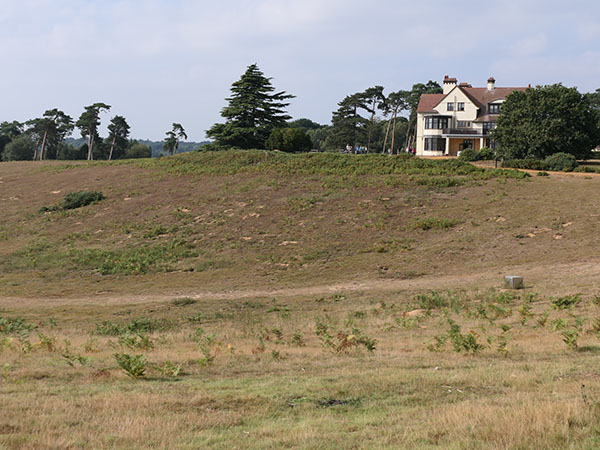
Edith Pretty was living in the house, which overlooked the earth mounds from the southern windows, when she requested for the excavation work. She had an interest in archaeology as excavations were made when she was a child. The Woodbridge Flower show has a discovery in 1937, and this rekindled her interest in the mounds. She hired local archaeologist Basil Brown to do some work. Some of the mounds had been robbed.
In the summer of 1939, he went to work on the largest of the mounds at Sutton Hoo. It ended up being an Anglo-Saxon ship burial, and the grave robbers did not dig down far enough to discover the treasures. In August of 1939, Edith Pretty donated the finds to the nation. The UK prepared for war, and the escavator Basil Brown covered the ship trench to protect it.

The new observation tower was only opened up a week ago when I visited Sutton Hoo in early September. The tower can be climbed for views over the mounds.
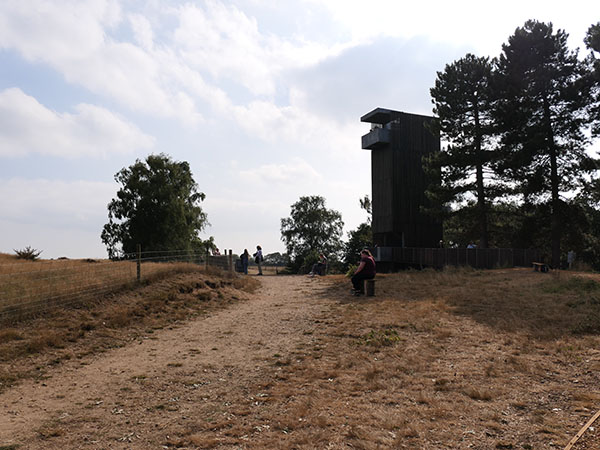
The landscape of Sutton Woo was settled for at least 3,000 years. Before the mounds, the lands were farmed, and 1,400 years ago, the land became a sacred burial place by the Wuffing dynasty. Each mound was a memorial to an individual who had passed. After the Anglo-Saxons, medieval farmers used the mounds as rabbit warrens, and robbers stole from them in the 17th century. Gradually, farming and other activities reduced the height of the mounds. The mounds would have been much higher, and one of them has been reconstructed to its original height.
The great ship burial mound contained a 27-meter long ship with space for 40 oarsmen. The markers at each end of the mound dictate its length. The wood rotted away in the acidic soil, but the iron rivets remained in place. The ship burial was a symbolic ceremony for the deceased king to take his next journey to the afterlife. The possessions were located along the king's body in the boat, including the iconic Sutton Hoo helmet.
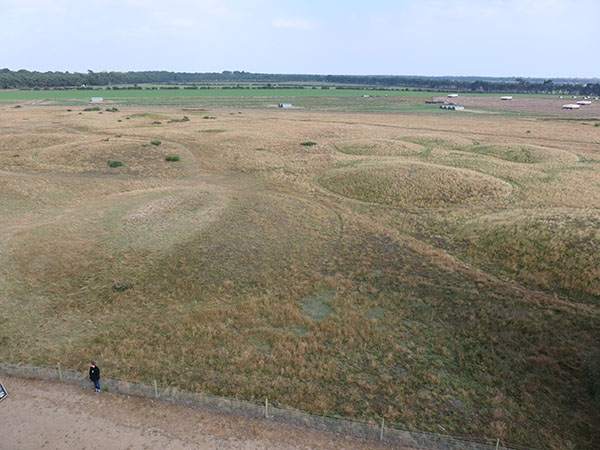
The burial is thought to be King Raedwald, who ruled East Anglia in the 600s. After the Roman occupation, Germanic and Scandinavian people (known as Anglo-Saxons) came to live in parts of England. King Raedwald died in the 620s, and he had an impressive ship burial in the customs of the time in his ruling dynasty of Wuffings.

After visiting the mounds, I walked back to the house to see the exhbition inside the house. This talked about the excavations of the burials and those involved. The first iron rivet discovered as a piece of iron with five additional ones in a position, marking the stern of the ship. It is on display in the house.

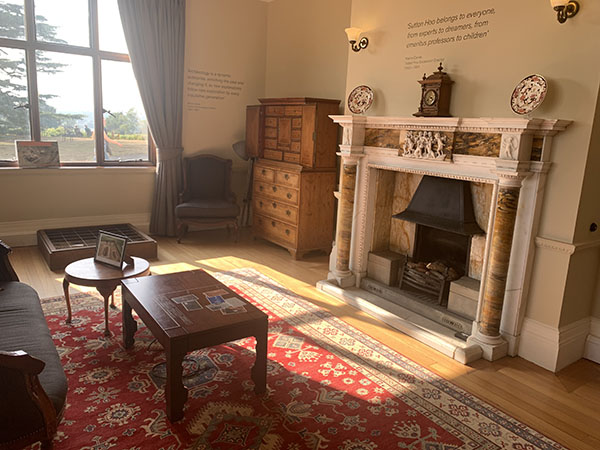
Some of the original objects are located at the British Museum, but there are replicas and some original objects at the museum at Sutton Hoo. The findings are the considered the greatest treasure discovered in Britain. The helmet is a replica.

One of the mounds at Sutton Hoo contains the grave of a young man buried with his horse. Weapons and harness for the horse was included in the grave. He was of high social standing and semed to be valued by the king due to the lavish items in the grave.
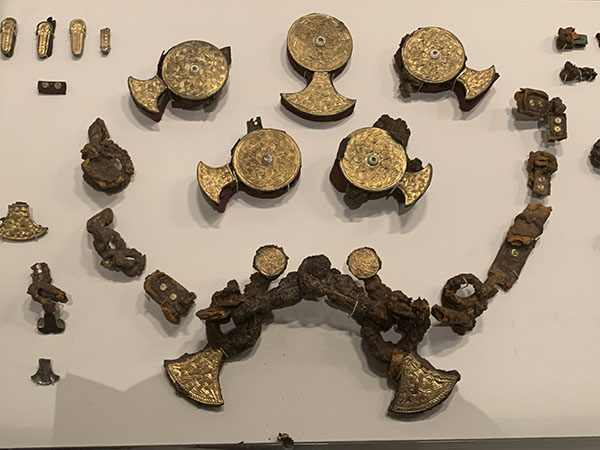
The king's grave contained a purse with several golden coins and other gold items, placing them within northern Europe. The items in the graves connected East Anglia with the rest of the world - garnets from India or Sri Lanka and items from throughout Europe.
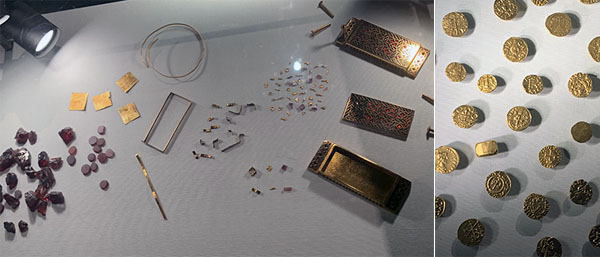


Ship burials were common in Sweden, and the helmet and shield in the grave may have been gifts from connections with relatives in the North Sea.
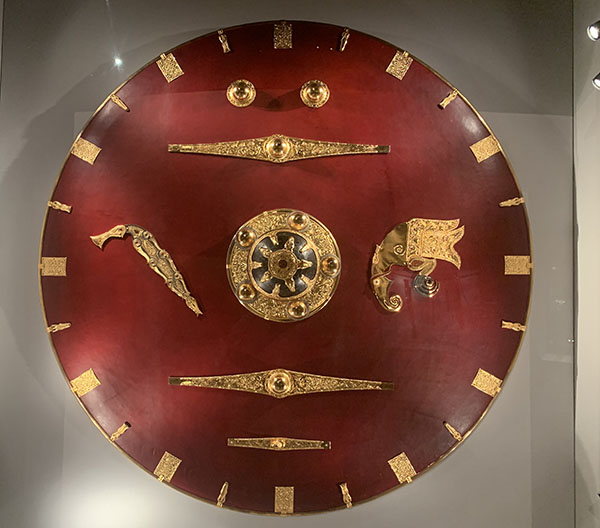
In addition to the expensive items, there are buckets and remains of bowls from funeral feasts. Some of the other mounds contained cremated human remains.
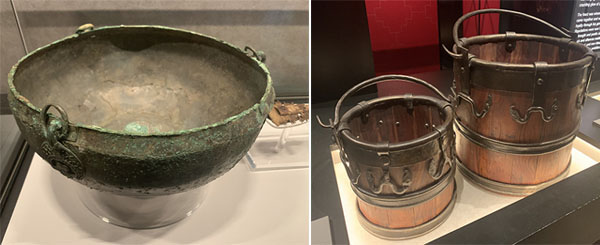
The visit to Sutton Hoo is fascinating and contains a lot of information about the items discovered and their importance in this area of England.


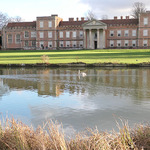
Leave a comment